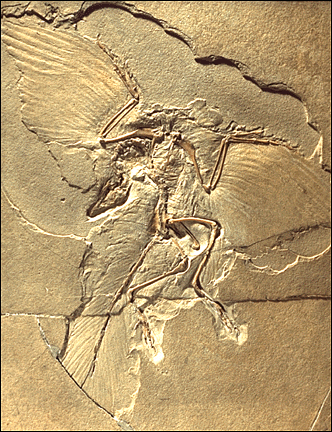Références de l'article :
Kundrát, M. In Press. Avian-like attributes of a virtual brain model of the
oviraptorid theropod *Conchoraptor gracilis*. Naturwissenschaften.
Abstract:
An almost complete adult endoneurocranium of Conchoraptor gracilis Barsbold 1986 (Oviraptoridae; ZPAL MgD-I/95), discovered at the Hermiin Tsav locality (the Upper Cretaceous) in Mongolia, is analyzed. A virtual model of the endoneurocranial cavity was derived from CT scans and represents the most complete maniraptoran endocast to date. It displays reduced olfactory bulbs, large cerebral hemispheres in contact with the expanded cerebellum, an epiphysial projection, optic lobes displaced latero-ventrally, presumptive cerebellar folia, enlarged cerebellar auricles, and a deep medulla oblongata with a prominent ventral flexure. Contrary to Archaeopteryx, the shortened olfactory tract and cerebellum overtopping cerebral hemispheres of Conchoraptor resemble conditions in modern birds. Calculating brain mass relative to body mass indicates that Conchoraptor falls within the range of extant birds, whereas Archaeopteryx occupies a marginal position. Most of the endoneurocranial attributes, however, have a less birdlike appearance in Conchoraptor than do corresponding structures in Archaeopteryx and modern birds in which 1) postero-laterally expanded hemispheral domains broadly overlap the optic lobes, 2) the epiphysis projects to the posterior cerebrum, 3) lateral extension of the optic lobes substantially decreases a brain length-to-width ratio, 4) optic lobe and anterior hindbrain are superposed in lateral view, and 5) cerebellar and midbrain compartments are in distinct superposition. The endoneurocranial characteristics of Conchoraptor, taken together, suggest that the animal had a keen sense of vision, balance, and coordination. The data presented in this study do not allow an unambiguous assessment whether the avian-like endoneurocranial characteristics of the flightless Conchoraptor evolved convergently to those of avian theropods, or indicate a derivation of oviraptorosaurs from volant ancestors.
